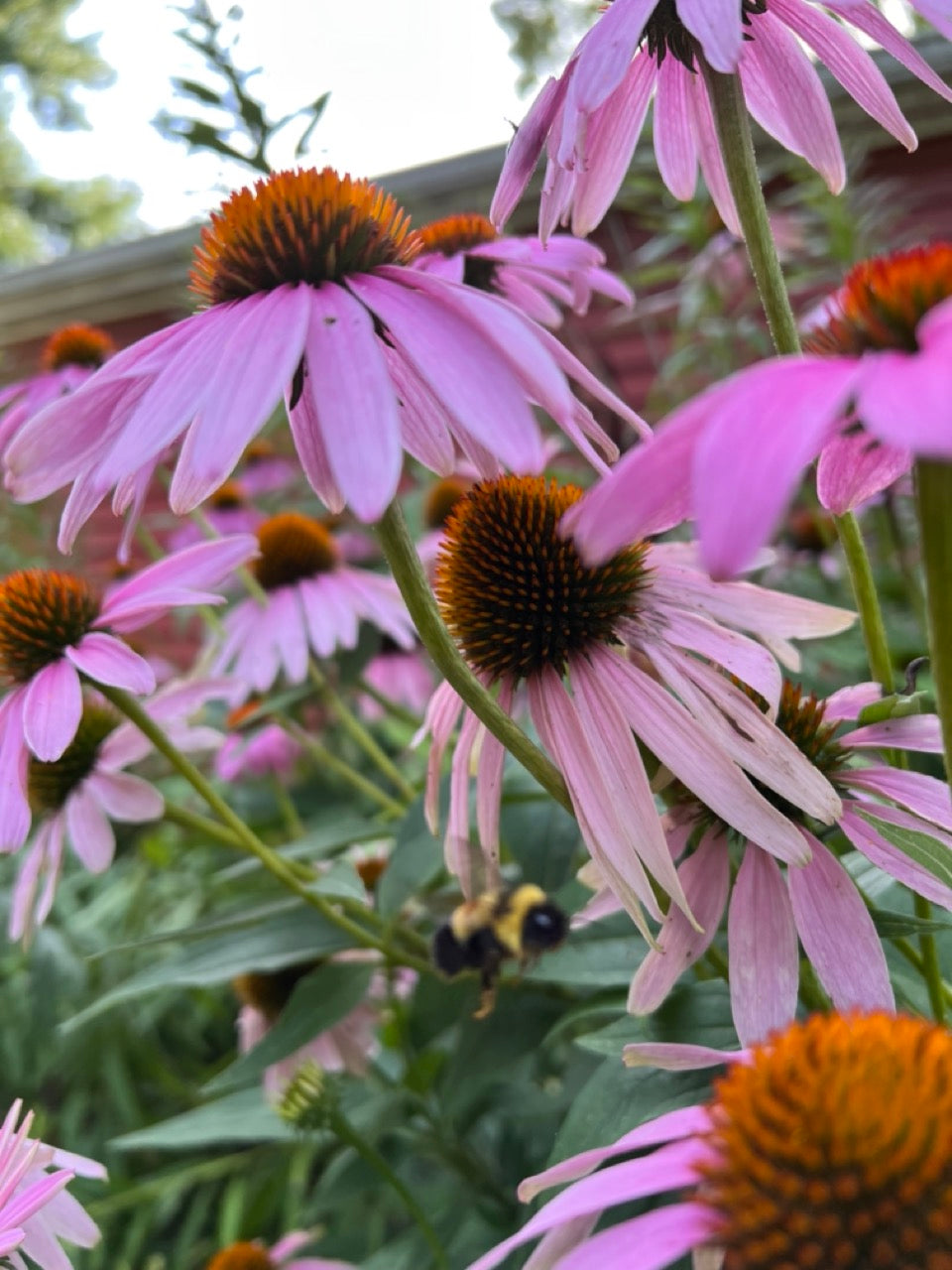
Driftless Seed Supply Grower Resources
Echinacea Growing Resources
Introduction
Echinacea, commonly known as coneflower, is a native North American perennial known for its striking flowers and medicinal properties. It plays a significant role in the ecosystem of native prairies, supporting local wildlife and maintaining biodiversity.
Variety Selection
- Echinacea purpurea: Popular for cut flowers and medicinal use.
- Echinacea angustifolia: Widely used for its medicinal roots.
Site Selection and Soil Preparation
- Sun Exposure: Full sun is ideal.
- Soil Type: Well-drained soils with high organic matter.
- Soil pH: Prefers a pH of 6.0-7.5.
Planting
- Timing: Plant in spring or early fall.
- Spacing: Plant 18-24 inches apart to ensure adequate air circulation. A final spacing of at least 12 inches within row and 24 inches between row will ensure vigorous growth for multiple years.
- Depth: Sow seeds 1/4 inch deep or plant root divisions. Planting as transplants with several sets of true leaves in the rosette can be helpful for establishment, but can also plant 3-4 seeds in clumps and then thin to one plant.
Irrigation
- Water Requirements: Moderate. Echinacea is drought-tolerant once established.
- Watering Method: Drip irrigation or soaker hoses are recommended to avoid wetting foliage.
Fertilization
- Initial Fertilizer: Apply a balanced organic fertilizer at planting.
- Ongoing Nutrition: Annual application of compost to promote healthy growth.
Pest and Disease Management
- Pests: Generally pest-resistant. Watch for aphids and Japanese beetles.
- Diseases: Avoid overhead watering to prevent fungal diseases like powdery mildew.
Harvesting
For Cut Flowers
- Timing: Harvest when blooms are just opening.
- Method: Cut the stem at the desired length, ideally in the morning.
For Medicinal Use
- Root Harvest: Dig up roots in the fall of the third growing season.
- Flower Harvest: Pick flowers when they are fully open, typically in mid-summer.
Post-Harvest Handling
- Cut Flower Care: Place stems in water immediately. Store in a cool place.
- Root Processing: Clean, chop, and dry roots for medicinal use.
Ecosystem Role
- Wildlife Attraction: Echinacea is a vital food source for pollinators and beneficial insects.
- Prairie Ecosystems: Contributes to the biodiversity and health of native prairies.
Additional Tips
- Deadheading: Regularly remove spent flowers to encourage more blooms.
- Division: Divide plants every few years to maintain vigor.





